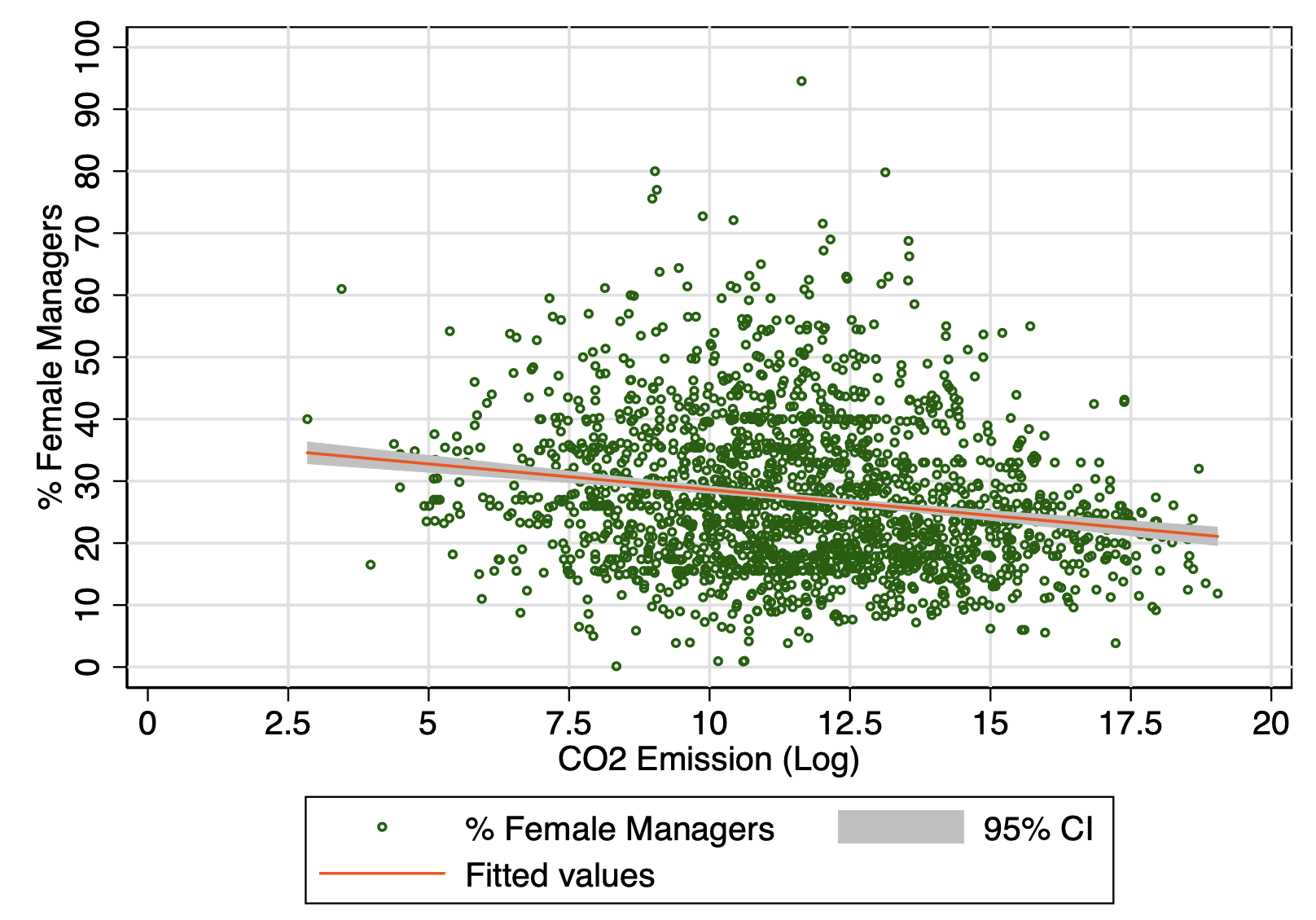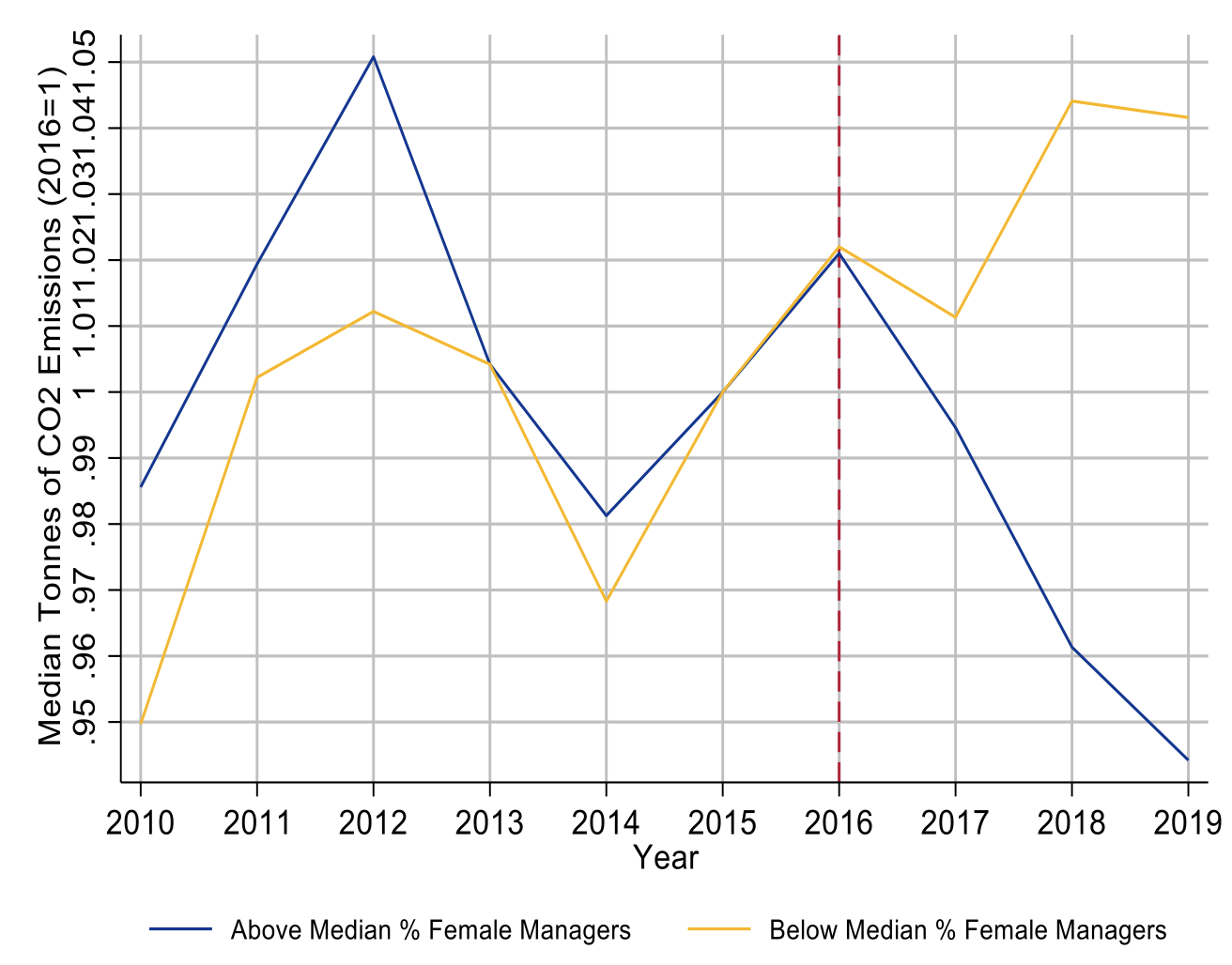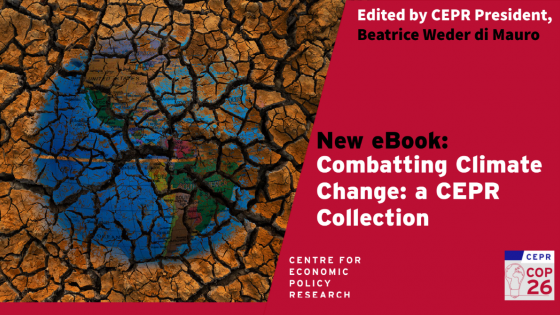In recent years, climate change and its impact have been central to the global policy debate (Weder di Mauro 2021). Reducing the emission of greenhouse gases (GHGs) is crucial for sustainable economic growth, preventing natural disasters. and preserving biodiversity. Given the scale of climate risks, achieving carbon neutrality by 2050 represents an urgent priority.
A growing body of research assesses solutions to mitigate climate change, including carbon pricing (van der Ploeg and Rezai 2018), a combination of public interventions and private sector mitigation strategies (Bolton et al. 2021), and international agreements (Altunbas et al. 2021). Yet at the firm level, the role of corporate governance, and in particular that of gender diversity within the firm, is largely overlooked.
The relationship between women and the environment
The gender socialisation theory (Chodorow 1978) and the social role theory (Eagly 1987) predict a positive impact of female decision-makers on environmental issues. This is because of women’s greater concern about the environment compared to men, and greater concerns about ethical issues more generally. Women are seen in these theories to be more community-minded and characterised by traits such as empathy, caring and concern for others. These theories find large support in the empirical literature. Prior research shows that firms with a greater female representation in their boards tend to have better governance quality and disclosure (Adams and Ferreira 2009) which facilitates decisions on corporate social responsibility and the environment (Eagly et al. 2003).
We take a different perspective and investigate the relationship between the percentage of women in managerial positions and carbon emissions within organisations (Altunbas et al, 2022). While directors’ decisions shape a firm’s approach to environmental issues, the implementation strategy rests with managers. It follows that if female managers are more inclined towards environmental protection than their male peers, a firm with more female managers is likely to display greater carbon emission reduction. A simple visual inspection of this relationship seems to indicate that a higher percentage of female managers is associated with lower levels of carbon emissions, suggesting that female managers can play an important role in reducing the firm’s pollution (Figure 1).
Figure 1 Correlation between firm female managers and carbon emissions
Econometric evidence obtained from a sample of 1,951 listed corporates in 24 industrialised economies over the period 2009-2019 confirms this relationship. A 1 percentage point increase in the share of female managers within the firm leads to a 0.5% decrease in carbon emissions. This effect is statistically significant also when the empirical model is enriched to control for institutional differences caused by more patriarchal and hierarchical cultures and religions. At the same time, gender diversity at the managerial level has stronger mitigating effects on climate change if females are also well-represented outside the organisation (e.g. in political institutions and civil society organisations).
Female managers and CO2 emissions: A pre and post-Paris Agreement comparison
The Conference of the Parties Summit held in Glasgow in November 2021 (COP 26) revised the global agenda on climate change resulting from the 2015 Paris Agreement. Participating countries have agreed upon strengthening the pledges on carbon emissions reductions to try to keep temperature rises within 1.5°C (the threshold indicated by scientists to prevent climate disasters).
Figure 2 suggests that carbon emissions moved in a similar direction prior to the Paris Agreement for both firms with an above-median percentage of female managers and firms with a below-median percentage of female managers. However, it shows a larger reduction in the level of carbon emissions for those firms with an above-median percentage of female managers prior to the agreement after the Paris Agreement.
Figure 2 Trends in corporate carbon emissions before and after the Paris Agreement
Difference-in-differences estimations, which take into account possible endogeneity problems, confirm a negative and statistically significant relationship between firms with a greater percentage of female managers and carbon emissions. Specifically, after the Paris Agreement, firms with an above-median percentage of female managers decrease their carbon emissions by about 5% in comparison to firms with a below-median percentage. This result offers important policy indications. The transmission channels of climate-oriented policies such as the Paris Agreement are amplified by higher female representation in decision-making positions. Hence, policies that support gender diversity can have a complementary and significant impact on reducing firms’ GHG emissions and combating climate change.
Authors’ note: The views expressed in this column are those of the authors only. They do not necessarily represent the views of the BIS or the ECB.
References
Adams, R B, D Ferreira (2009), “Women in the boardroom and their impact on governance and performance”, Journal of Financial Economics 94: 291-309.
Altunbas, Y, D Marques-Ibanez, A Reghezza, C Rodriguez d’Acri, M Spaggiari (2021), “Financing climate change: International agreements and lending”, VoxEU.org, 21 May.
Altunbas Y, L Gambacorta, A Reghezza, G Velliscig (2022), “Does gender diversity in the workplace mitigate climate change?”, CEPR Discussion Paper 17159 (published also as BIS Working Paper 977 and ECB Working Paper 2650).
Bolton, P, H Hong, M Kacperczyk, X Vives (2021), “Resilience of the financial system to natural disasters”, VoxEU.org, 25 May.
Chodorow, N (1978), The reproduction of mothering: Psychoanalysis and the sociology of gender, Stanford University Press.
Eagly, A H (1987), Sex differences in social behavior: A social-role interpretation, Hillsdale.
Eagly, A H, M C Johannesen-Schmidt, M L van Eugen (2003), “Transformational, transactional and laissez-faire leadership styles: A meta-analysis comparing women and men”, Psychological Bulletin 129: 569-591.
Van der Ploeg, F and A Rezai (2018), “How to deal with climate change deniers: Price carbon!”, VoxEU.org, 05 January.
Weder di Mauro, B (2021), “Combatting climate change: A CEPR Collection”, VoxEU.org, 08 November.









